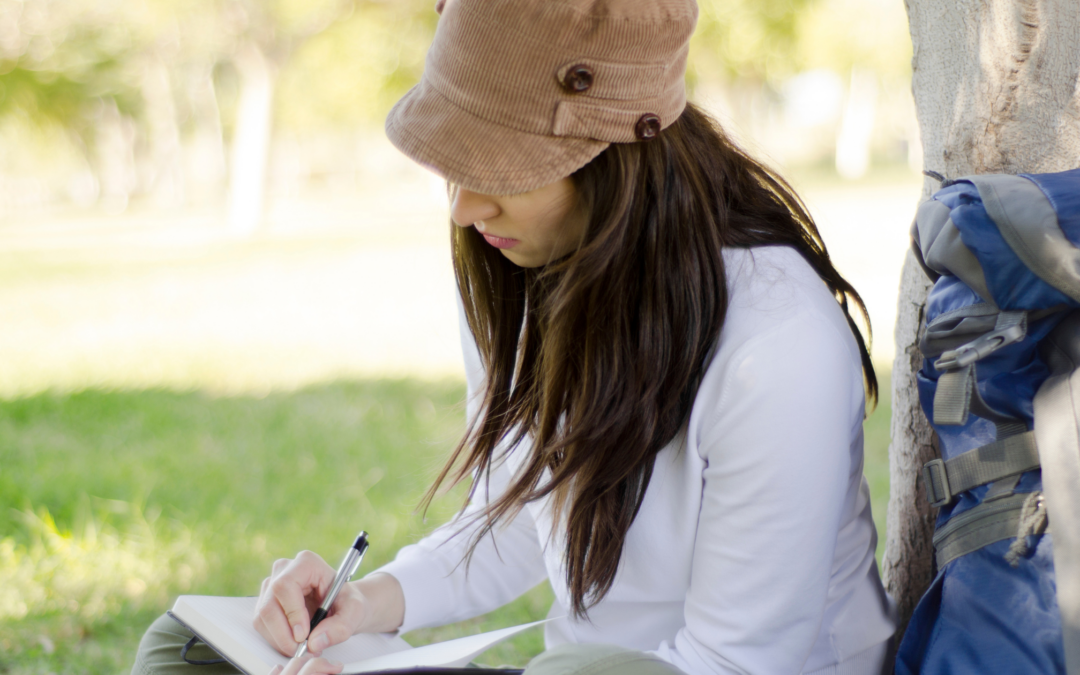The Joy of Nature Journaling
One of the best things you can do in your homeschool is to occasionally load up your kids, drive out to the state land or park, and get out into nature. Research has shown that regular immersion in nature benefits to mental health, mood, cognitive development, and emotional well-being (source). It can also be a time of bonding and building happy family memories.
Nature time need not be solely recreational. As homeschoolers, the entire world is our classroom, and educational opportunities are everywhere! For older students, you might want to consider integrating outdoor time with a nature journaling project.
What is Nature Journaling?
Understood simply, nature journaling is recording one’s perceptions, observations, and feelings about the natural world that surrounds us. This can take a variety of forms: writing, collecting, photography, painting, video, sketching, and even the composition of music. It is essentially a type of nature-themed scrapbooking. Whatever is done is usually collected in a physical journal, similar to a scrapbook.
The purpose of the nature journal is twofold, used for reflection and education.
The nature journal is an excellent tool for personal reflection. It is a collection of observations and inspirations drawn from the natural world. For example, a student might perch upon a hilltop overlooking a scenic river valley full of fall colors and write a poem exploring how the scene makes her feel. As Catholics, we can connect this with the revelation of God to us through the natural world—as the psalm says, “The heavens proclaim the glory of God; and the firmament proclaims his handiwork” (Ps. 19:1).
It can also be an educational resource. Nature journaling can be integrated into homeschooling lessons on the natural world. If you are studying fungi, clouds, the water cycle, birds, or anything observable in the outdoors, this can be linked to nature journaling as part of your weekly class time. Instead of making your student spend an hour with their nose in the science book, spend that hour scouring the woods for mushrooms and chronicling their observations. The nature field journal becomes part of the final grade for the class.
What Age is Nature Journaling For?
I suggest nature journaling for older children because it requires a degree of reflectiveness and abstract thinking that is proper for older children. That doesn’t mean the younger kids can’t participate, too. If you have mixed ages, you can take the whole family for a walk and let the younger kids explore while the older kids work on their nature journals. Alternately, you can have younger kids do simplified versions of the nature journal scaled down to their age—while the older child is nature journaling, the younger kids are tasked with scouring the woods to find three different kinds of leaves or identifying a certain type of tree.
Ideas for Nature Journaling
There are so many ways one can go with nature journaling that it’s really not possible to give a comprehensive list of everything you can do. Here are some ideas to get the juices flowing:
- Charting the weather
- Tracking moon phases
- Observations about the changing of the seasons
- Identification of fungi, trees, or other flora
- Ph tests of soil
- Learning about the water cycle
- Observations of cloud types
- Bird watching
- Observing and sketching animal tracks
These empirical tasks are all coupled with creative or reflective activities, like poetry or drawing.
For More Resources…
If you want more tips on nature journaling, I recommend the work of Clare Walker Leslie. Clare is a wildlife artist, naturalist, educator, and author of seven books. Specifically, she has a book called Keeping a Nature Journal: A Whole New Way of Seeing the World Around You. Written in conjunction with Charles Roth (a wildlife author and former director of the Massachusetts Audubon Society), Keeping a Nature Journal offers techniques for nature journaling through pictures and words. It has an awesome collection of prompts that help you sharpen your senses of observation to appreciate the beauty of nature in all its wonderful facets. The methods taught in this book are applicable to all seasons and all sorts of natural environments.
To go deeper into the topic, especially with younger children, see Maureen Wittmann’s article Homeschooling Nature Studies.
Whether you use a guide like Clare Leslie’s Keeping a Nature Journal or come up with something on your own, nature journaling is a fantastic way to inculcate a deep love and appreciation for nature in your children in a way that refreshes the spirit.
Online Classes
Homeschool Connections offers a wide variety of courses that would complement nature journaling nicely. Just a few to consider are:
- Field Science: Wonder of Nature, Parts One and Two with Inshal Chanet
- Introduction to Ornithology with MacBeth Derham
- Water: The Best Molecule with MacBeth Derham
- Weather: Introduction to Meteorology with MacBeth Derham
What homeschooling tips or questions do you have? Join me and other homeschooling parents at our Homeschool Connections Community or our Facebook group to continue the discussion!
NOTE: This article contains affiliate links.






